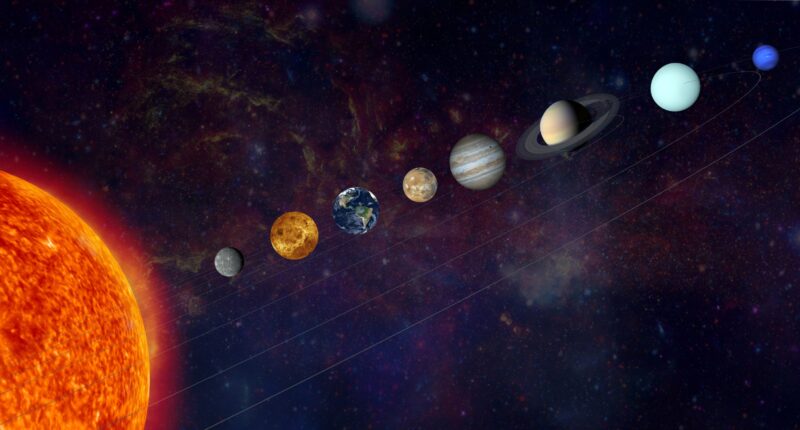A ONCE-in-a-lifetime eclipse has revealed an ‘exceptionally rare’ star system with a 1000-year orbit.
The end of the seven-year-long eclipse was discovered by pure chance.
Scientists in the US stumbled across the rare sight when observing a star, known as Gaia17bpp, as part of a wider lookout for “stars behaving strangely”, they said.
The astronomers, from the University of Washington, noticed the distant star was dim but suddenly grew brighter as they accidentally watched a seven-year eclipse come to an end.
Gaia was pushed out of sight by a nearby white dwarf.
But over the past two-and-a-half years, the star has grown brighter, researchers explained, as it continued its millennium-long orbit.


Using extra data from the California Institute of Technology, researchers found that the eclipse lasted between 2012 and 2019.
“We believe that this star is part of an exceptionally rare type of binary system, between a large, puffy older star — Gaia17bpp — and a small companion star that is surrounded by an expansive disk of dusty material,” said Anastasios Tzanidakis, a doctoral student at Washington University.
“Based on our analysis, these two stars orbit each other over an exceptionally long period of time — as much as 1,000 years. So, catching this bright star being eclipsed by its dusty companion is a once-in-a-lifetime opportunity.”
The dust from from white dwarf is enough to fill the space between the Sun and Earth in our solar system, researchers said.
Most read in Tech
During its eclipse, the unseen stellar companion – the white dwarf – was blocking around 98% of Gaia’s light, according to joint researcher on the study James Davenport.
The star is part of what scientists call a binary system.
Binary system’s have particularly long orbital periods, meaning it is rare to catch one companion in the system eclipsing another.
Such an event may actually just happen once a millennium.
It was a “serendipitous discovery”, Tzanidakis added.
“Over 66 years of observational history, we found no other signs of significant dimming in this star,” he explained.
“If we had been a few years off, we would’ve missed it. It also indicates that these types of binaries might be much more common.
“If so, we need to come up with theories about how this type of pairing even arose. It’s definitely an oddity, but it might be much more common than anyone has appreciated.”
Best Phone and Gadget tips and hacks

Looking for tips and hacks for your phone? Want to find those secret features within social media apps? We have you covered…
We pay for your stories! Do you have a story for The Sun Online Tech & Science team? Email us at [email protected]









